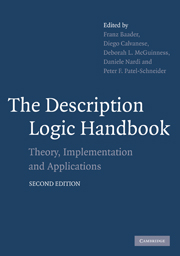The Semantic Web Explained
The Semantic Web is a new area of research and development in the field of computer science, which aims to make it easier for computers to process the huge amount of information on the Web, and indeed other large databases, by enabling computers not only to read, but also understand the information. This book is intended to be a textbook about the Semantic Web and related topics, and is based on successful courses taught by the authors. They describe not only the theoretical issues underlying the semantic web, but also practical matters (such as algorithms, optimisation ideas and implementation details) and this aspect will make the book valuable as well to practitioners.
Supplementary materials available via the web include include source the code of program examples, and the syntactic description of various languages.
- The first comprehensive textbook on the Semantic Web designed for higher education courses
- Includes a full introduction to description logics, the formalism underlying the Semantic Web
- Contains numerous exercises to aid teaching and learning
Product details
October 2014Paperback
9780521700368
478 pages
247 × 174 × 26 mm
0.83kg
117 b/w illus. 195 exercises
Available
Table of Contents
- Introduction
- Part I. The Semantic Web:
- 1. The World Wide Web today
- 2. The Semantic Web and the RDF language
- 3. Managing and querying RDF sources
- Part II. Ontologies and Logics:
- 4. Description logics
- 5. Reasoning on simple description logics
- 6. Implementing a simple description logic reasoning engine
- 7. The SHIQ tableau algorithm
- Part III. Ontologies and the Semantic Web:
- 8. The Web Ontology Language
- References
- Index.




